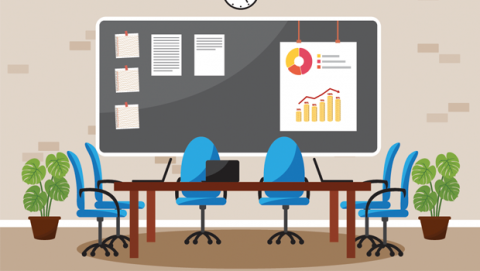Over the years, we’ve all spent hours in meetings – some good, but too many time-wasting, confusing, or even downright ugly.
It doesn’t have to be that way. Optimizing your meetings is one of the easiest ways to have a positive impact on your teams and even your entire organization. It is a popular topic of the podcast I co-host with my Red Hat colleague and friend Gunnar Hellekson, who shares my passion for smoothly run meetings.
We’re always on the lookout for ways to improve the value of the meetings we host. Here are 10 of my favorite tips:
1. Ask yourself why you're having the meeting
Is it because you always have it? Is it necessary, or has it outlived its usefulness or purpose? A canceled meeting is much better than one that wastes everyone’s time.
[ Want more advice on running better meetings? Read also: Why your meetings stink – and what to do about it. ]
2. Invite the right people to the meeting
Less is more when it comes to meetings: Jeff Bezos’s two-pizza rule is wisdom to live by. After all, meetings are expensive, and those with too many attendees often aren’t productive. Ask yourself why each person is there and what their role is. If they don’t have a role, or if their role is served by someone better suited, don’t invite them (chances are they’ll thank you). For those who want to attend but won’t add value, offer to send the meeting minutes.
Most importantly, if essential decision-makers or stakeholders can’t make it to your meeting, consider rescheduling it. There’s no sense in holding a meeting only to do it all over again when everyone is available.
3. Declare what type of meeting you’re having
Are you informing, brainstorming, deciding, or something else? If you’re clear about the meeting type, you won’t have people brainstorming in the middle of an informational meeting, for example, where decisions have already been made.
4. Include an agenda in the meeting invitation
An agenda lets people mentally prepare for the meeting instead of thinking on their feet. Introverts like me will thank you; we tend to prefer structure over surprises.
5. Take notes collaboratively
Having everyone take their own notes can lead to confusion because each attendee may hear different things. Instead, take notes collaboratively, using Google Docs or some other shared document editing platform to ensure that everyone is literally on the same page. This is particularly helpful for people who speak different primary languages as reading what was said will complement what they thought they heard.
For recurring meetings, I use the same Google Doc, with the newest notes and agenda at the top; that way, people can scroll down to see the history of what was said and decided. And for heaven’s sake, don’t exacerbate gender stereotypes by asking the only female in the room to be the notetaker. Taking notes should be a shared responsibility.
6. Start on time
There are countless reasons that meetings start late, but it happens far too often. Delayed meetings early in the day can lead to a cascading effect that impacts everyone’s schedule for the rest of the day. Respect your colleagues by starting on time.
7. End with time to collect actions
Don’t end a meeting without first establishing action items. By leaving time at the end of the meeting to collect actions and owners, you’ll be making progress and even have time to catch your breath for the next task. Google Calendar offers a “Speedy meetings” feature that can remind you to end on time, or even early.
8. Turn cameras on by default, including people in the room with you
Turning cameras on lets you observe body language and discourages multitasking. It also levels the playing field in terms of participation for remote attendees.
9. Establish meeting norms
If you lead regular meetings with the same team, find out what team members want to get out of the meeting and what they see as the do’s and don’ts. The Open Practice Library provides a great how-to on building a social contract.
10. Validate the value of the meeting and seek areas for improvement
A social contract of team norms does no good if no one follows it. Always look for ways to make the meetings more valuable to the attendees. A great way to solicit feedback is to use the Open Practice Library’s team sentiment exercise.
I could go on, but this list should get you on the right track to maximize the value of your meetings in 2020. What are your favorite meeting tips? Please let us know in the comments below!
[ Is that meeting really necessary? Here's how to decide: How to kill a needless meeting. ]







